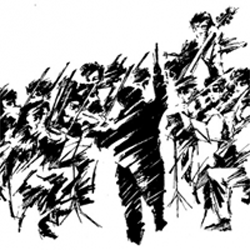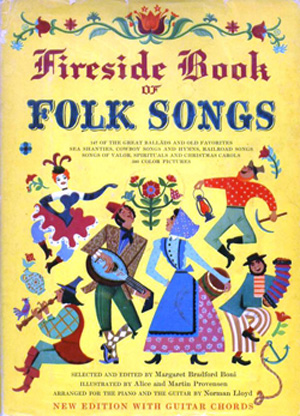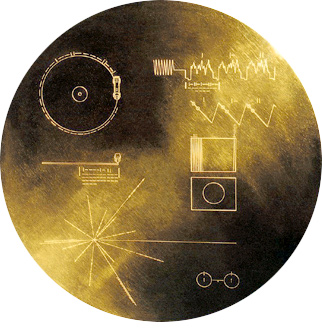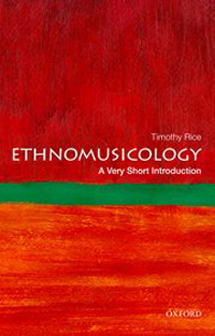Ethnomisicologizing: Essays on Music in the New Paradigms, by William C. Banfield. Lanham, MD: Rowman & Littlefield, 2015. 383 pp.
Reviewed by Jonathan L. Friedmann, Ph.D.
William C. Banfield describes his latest book, Ethnomisicologizing: Essays on Music in the New Paradigms, as a “reader/text” presenting “a choir of voices and perspectives” (p. x). Such a multi-voice assemblage is unusual for a single-author volume. Departing from the staid format of the conventional academic tome, Banfield mixes together interviews, historical surveys, opinion pieces, travel notes, letters, social theory, pedagogical essays, album reviews, and “poem-essays.” The twenty chapters originated as separate pieces, and the impression is more improvisatory jazz than rigid composition: themes are stated and later rephrased; motifs are artfully interjected; poetic riffs spring up seemingly on the spot.
This is fitting given both the author and subject matter. Banfield is professor of African Studies/Music and Society, composition, and graduate history studies at Berklee College of Music, Boston, as well as a jazz guitarist, composer, and public radio host. The book is in some ways a chronicle of his work at Berklee College of Music, an institution founded on popular music rooted in Black music traditions. In the African Studies/Music and Society program, Banfield explores the development of Black music in America, its global reach, and the students’ place in the cultural chain. As he states on his faculty website: “You can’t know where you’re going unless you know where you are, and where you came from. When you put those three things together, you have the best formula for making a successful impact on your craft and on the world of music. When students start to sense all the connections, you can see the ‘aha experience’ in the eyes. It’s in the questions they ask, it’s in their performances. It’s a spirit.”
The book’s composite, “improvised” character has a few drawbacks. Some ideas are too often repeated (in almost identical language), a review of George Lewis’ album Les Exercices Spirituels seems out of place, and the same quotations by Margaret Mead and Jean Cocteau appear more than once. A full speech by Cornell West is included without being identified until the very end—suggesting, until that point, that the words are Banfield’s, not West’s. But these are minor quibbles about an otherwise stimulating collection of reflections on the history and current state of American popular music.
Banfield is a pedagogue and activist in the tradition of his mentor, Cornell West. This gives context to the book’s construction: Repetition is a fundamental teaching tool, and rephrasing a message in different ways helps it resonate with different audiences. That being said, the eclectic approach poses certain challenges for the reader (and the reviewer). There is much to sort through in the nearly 400 pages; it is better sipped than gulped down all at once. The unevenness is accentuated by the sporadic chapter lengths: one is close to fifty pages, another is just three pages, the rest fall somewhere in between.
Yet, despite these idiosyncrasies, the book orbits around a clear and persuasive message—namely, that the “post-album age” of YouTube, downloads, music streaming, and hyper-commoditization has led to a decline in “quality, skills, value of human expression, individuality, creative innovation, and a lack of spirit-soul” (p. xii). Banfield is no enemy of popular music. However, he contends that misguided infatuations are driving contemporary trends—e.g., markets, celebrity-obsession, sexual exploitation, producer-driven albums—and that young talent is being lost to money-obsession and concomitant cookie-cutter sounds. In short, “Popular music has got to mean something again” (p. 263).
This is the essence of the book’s neologistic title, Ethnomusicologizing: the “act of being with the common man, doing music and art in ways that connect” (p. 28). As an artist-activist, Banfield argues that artists and humanitarians must join together in demanding more from the culture we live in, both artistically and politically. More precisely, he urges Black musicians to return to Black music worthy of the name: “music made by Black people connecting with their cultural conditions in and outside Africa in diaspora” (p. 98). Past generations said/sang “‘Let freedom ring’; they were singing about freedom—they didn’t say, ‘Give me the bling, bling’” (p. 86). “Music that matters” carries a “people’s voice” and commits itself to issues and sentiments that are bigger than the artist him/herself.
Banfield summarizes this concept using two types of cultural relevancy. Long-term relevancy encompasses expressive art that grows out of and deeply reflects the human experience. It continues to impact people’s lives long after the moment of creation. Market relevancy, on the other hand, is art manufactured primarily for the here and now. The magic formula, according to Banfield, includes a bit of both long-term and market relevance—that is, human and commercial awareness.
At the heart of these and other discussions is the uneasy relationship between art and commerce. Today, many young musicians are driven by a short-sighted desire for money, fame, and power. But the purpose of art—true art—remains the search for meaning, purpose, inspiration, and spiritual fulfillment. Banfield is hopeful in this regard: “Young people feel they are a more integral part of their success story if they are allowed to bring to a product a piece of who they are, what their story is. I think, despite our capitalistic surges, people always return back to the basic humanistic codes” (pp. 75-76). Such nuanced appraisals make Ethnomusicologizing a provocative and profitable read.
Visit Jonathan’s website to keep up on his latest endeavors, browse his book and article archives, and listen to sample compositions.









